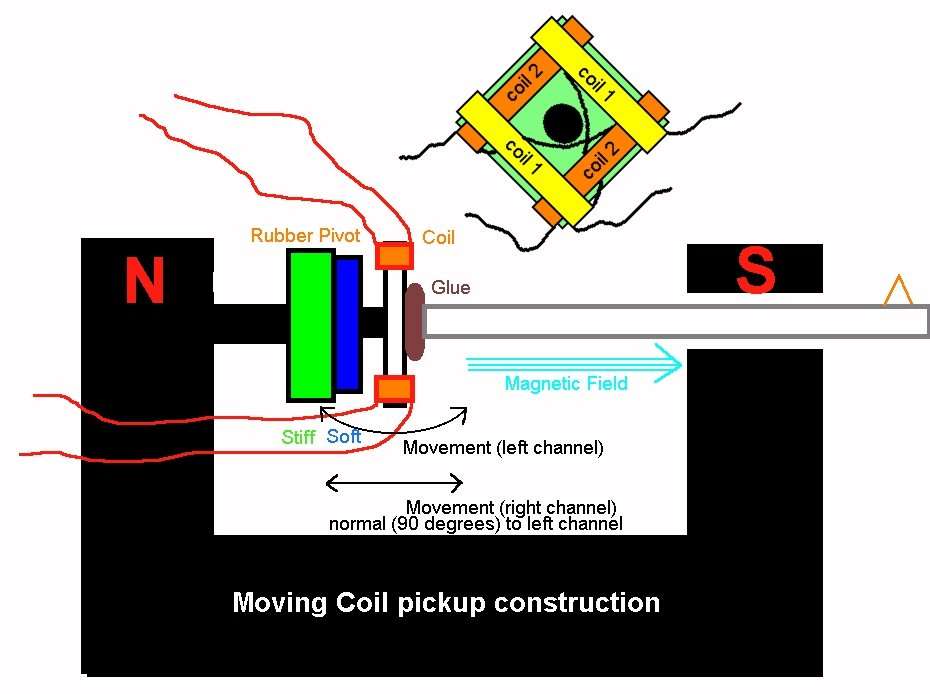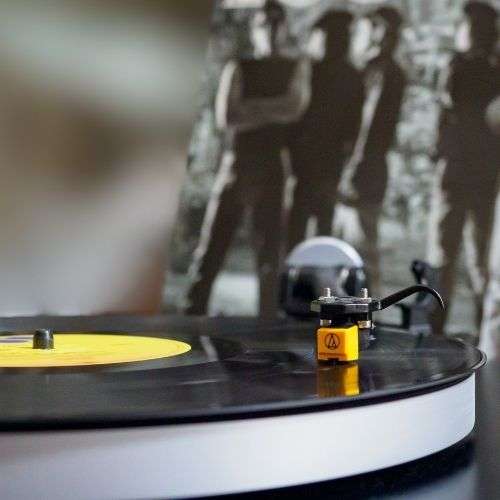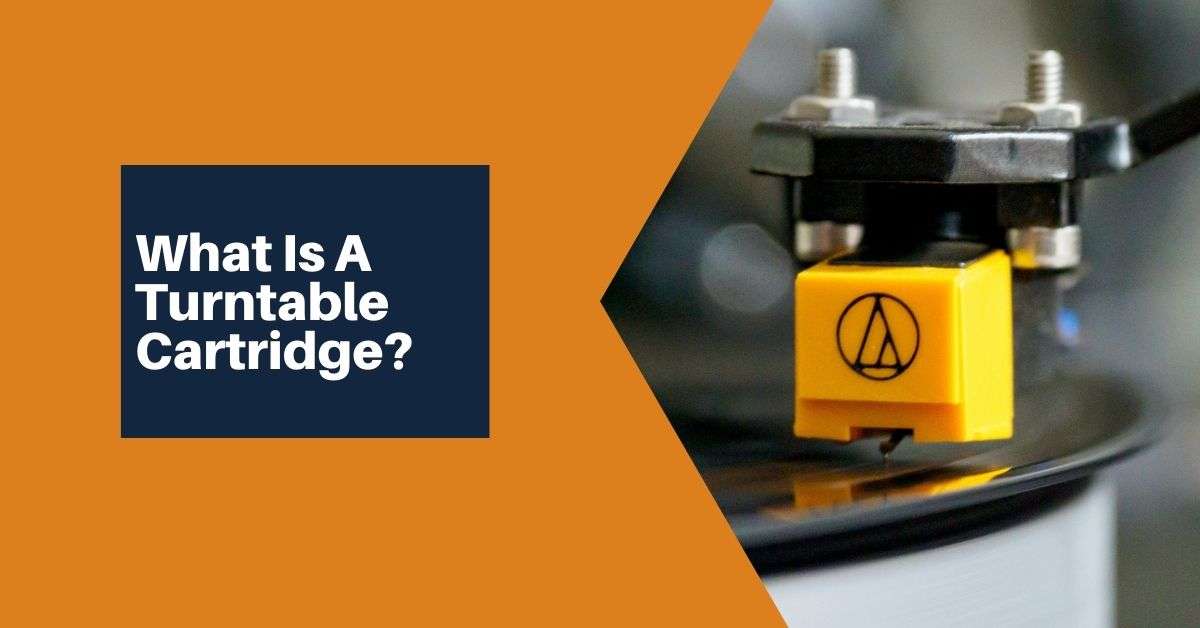A turntable cartridge, as the name suggests, is a device that converts vibrations from records into an electrical signal. These signals are then transmitted to speakers or headphones for playback. Without the use of a cartridge, even if you have good speakers and sound system, your music will not be audible! This article discusses some of the different types of cartridges available on the market today.
What is a Phono Cartridge?
Phono cartridges are mechanical devices that convert the information in record grooves into an electrical signal that may be amplified to create music. The cartridge converts vibrational energy into the crisp analog music we’ve grown to love and appreciate.
It should come as no surprise that the quality of your turntable cartridge has a significant influence on sound quality. Records are densely packed with audio information so purchasing a quality cartridge is a must for an improved listening experience.
How Does a Phono Cartridge Work?

The diamond stylus tip has direct contact with the record. As the stylus rides along the grooves of the record, it vibrates the cantilever, which is a rigid tube with a stylus at one end and a magnet on the other.
The cartridge then converts the mechanical energy generated by the vibrating stylus into electrical energy, which is then transmitted by wires to your phono pre-amp. The preamp then amplifies the signal to create sound, which you can listen to through either headphones or speakers.
Parts Of A Cartridge
A cartridge consists of five important parts: the stylus, cantilever, rubber suspension, magnets, coils.
Stylus
The stylus, or the “needle,” rides within the vinyl record grooves and transmits the movement of the grooves to the cantilever tube, causing it to vibrate.
The stylus is attached to the end of the cantilever and resembles a physical needle due to its fine point.
Cantilever
The cantilever houses the stylus and transmits the vibrations from the tip of the stylus to a magnet or moving coil in a cartridge. The cantilever is practically a thin metal rod, flexible yet resilient enough to retain its shape when vibrating.
Rubber Suspension
As the stylus moves along the groove of a record it encounters minute variations or bumps. A rubber suspension system absorbs these variations and prevents them from interfering with playback.
In other words, the rubber keeps your records and stylus in good condition by reducing wear caused by playing warped records.
Coils
The coils are wound columns of wire. The coils convert the magnetic energy from the cartridge magnet into an electrical signal that can be amplified.
Magnets
Magnets are used to impart a magnetic field on the cartridge’s coil. There are two kinds of cartridges that use magnets, a moving coil (MC) cartridge and a moving magnet (MM) cartridge – more on this later.
What are the Different Kinds of Turntable Cartridges?
There are two kinds of turntable cartridges: moving magnet cartridges (MM) and moving coil cartridges (MC).
Moving Magnet Cartridges (MM Cartridges)
A moving magnet cartridge uses magnets attached to the end of a cantilever. These cartridges contain coils wound on a metal form and placed within strong magnetic fields created by magnets under the stylus.
The coils attached to the cantilever are fixed, but the magnets vibrate as they respond and turn the movement into an electrical current to be sent to the amplifier.
Moving Coil Cartridges (MC Cartridges)
MC cartridges also use magnets and coils, but in a different way. Like their MM counterpart, the stylus has a cantilever that acts like a metal detector and is connected to the cartridge’s coils by wire. However, instead of using magnetic fields exerted by magnets under the stylus to induce current, the coils move around the aligned magnet.
These magnets are fixed and don’t vibrate like moving magnet Cartridges’ magnets. Their job is to create a magnetic field around them that penetrates through the coils of the cartridge. This creates an electrical signal called “phono” that is passed to an amplification system to be converted.
Different Types of Turntable Cartridge Styli
Spherical Tip
The Spherical stylus tip is a conical-shaped stylus and comes in both MM and MC models. Spherical tips are popular on entry-level turntables and make the most minimal amount of contact with the record grooves. This leads to lower sound quality and more wear and tear on your records.
Elliptical stylus tip
Elliptical stylus tips are more accurate than spherical styli. They provide superior audio quality and maintain the life of your records, and while higher in price than Spherical tips, can be had without breaking the bank.
Hyperelliptical
Hyperelliptical styli, also known as Shibata, fine line, or stereohedron, create less contact with the grooves of a record. These needles offer better tracking than elliptical or spherical tips and produce excellent audio quality. The quality does come with a higher price, but the fidelity of these styli is worth it for serious audiophiles.
Micro-Ridge
Micro-Ridge styli create more contact with grooves than any other type. They offer the best sound reproduction quality and lowest wear but really push the limits of what you’re willing to spend on a turntable cartridge due to the high level of craftsmanship needed to produce them.
How Long Does a Turntable Needle last?
Cartridge stylus life varies from one turntable needle to the next. Cartridges with elliptical or hyperelliptical tips tend to last longer than those with spherical or conical tips. Needles usually last around 1,000 hours of playtime depending on the type and condition they’re in when you first buy them.
Environmental factors can decrease that lifespan if your cartridge is exposed to extreme heat or humidity. Cartridge longevity also depends on how well you take care of it and how often you use it. Needle and cartridge maintenance is easy and inexpensive so it’s good to take care of your turntable cartridge and needle.
Remember: stylus wear is proportional to how much contact it has with your records.’ Cartridges with higher tracking contact will wear down faster and require more frequent replacement compared to cartridges that make less contact.
Do Turntable Cartridges Make a Difference?
Absolutely! Cartridges are one of the most important components of a turntable system. Cartridges can come in many shapes and sizes, but they all serve the same purpose – to turn vibrations into electrical signals which then get amplified through your speakers or headphones to bring your music experiences to life.
Cartridges come in all shapes and sizes, ranging from around $35 up to the thousands depending on the quality you want. Turntable cartridge choice is largely a matter of personal preference. It’s your turntable system, after all, and you’ll be the one listening to it
How to Choose the Right Turntable Cartridge?

There are a few things to consider when choosing a new cartridge. The most important being the compatibility of your turntable. Cartridge manufacturers usually have a compatibility chart that you can consult to ensure it will work with your turntable.
In terms of price, the quality you get is proportional to the amount you’ll spend so it’s best not to skimp or go overboard on any cartridge component if you really want an optimal sound experience.
At the end of the day, cartridge choice is really a matter of personal preference. Turntable cartridges vary greatly in sound, style, and price so it’s up to you to decide what’s the best cartridge for your turntable system.

Lead Editor / Owner
After beginning his career in the video and audio recording industry, Andrew started HiFi Hippo to share his knowledge and passion for vinyl and vintage audio with other readers.
